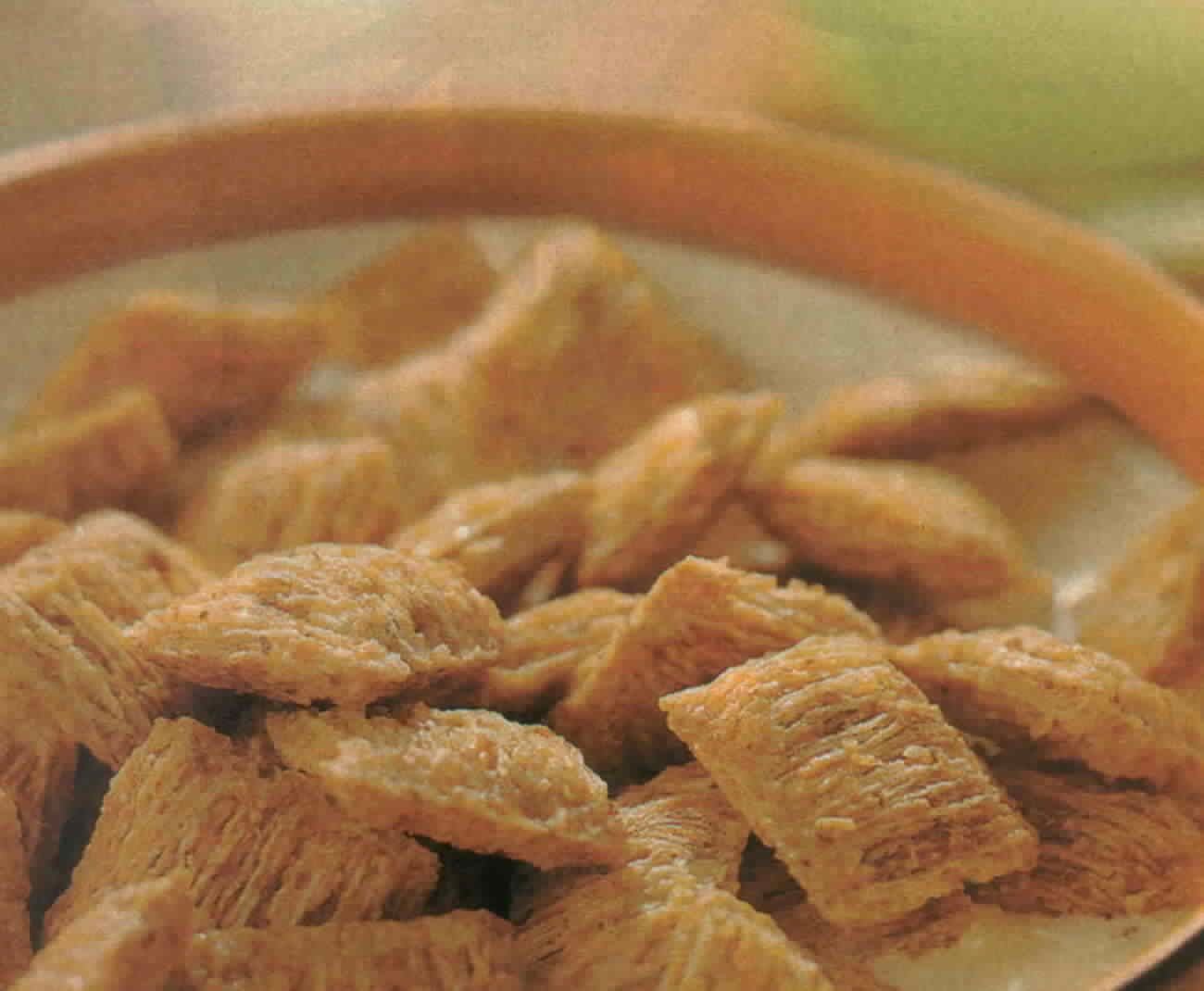
(Visit the Capital of Crunch: Fritolay)
EXISTENTIAL
CRUNCH

(Visit the Capital of Crunch: Fritolay)
Food cue. 1. A usually pleasant tactile sensation derived from chewing crisp vegetables, nuts, and nut substitutes. 2. A crackling texture, conducted by sensory nerves of the jaws, teeth, and tongue, and featured in the design of many edible consumer products (esp. snack foods).
Usage: We crave the crunchiness of nuts, and extend the properties of crunching to crackers and corn chips, which are served crisp. For added crunch, we add sprinkles to cookies, chopped nuts to ice cream, and salt crystals to pretzels. (N.B.: The most advanced corn flakes stay crunchy in milk.)
Evolution. Like their forest-dwelling Oligocene ancestors (ca. 30 m.y.a.), the first humans on the African savannah ate nuts as well as fruit. The jaws and teeth of Ramapithecus, e.g., reveal that early apes ate small, hard, nut-like foods 15-8 m.y.a. in the Miocene. In the mid-1990s, Americans spent $200 million a year on nutcrackers, grew 3.5 billion lbs. of peanuts annually, and were terribly fond of peanut butter (smooth and crunchy).
Primatology. Just as chimpanzees gather to eat crunchy foods, Americans consume bread sticks and party nuts, and shell peanuts together at baseball games. In Africa, chimpanzees shell panda nuts together under treetops in the Tai forest of Cote d'Ivoire (Ivory Coast). The chimps socialize as they crack the hard shells with pieces of wood, carefully placing each panda nut in a knothole before smashing it.
Candy messages. The three best-selling U.S. candy bars--M&M's, Snickers, and Reese's Peanut Butter Cup--contain nuts and are crunchy rather than merely soft. Each of the top three combines sweetness and nuttiness in a proven evolutionary formula for primates. The crisp candy coatings of M&M's, one of the most popular candies of all time, encase milk chocolate mixed with finely ground peanut powder.
Nut Substitutes. The most popular U.S. snack food is neither a seed nor a nut, but a crunchy nut substitute: the potato chip. Potato chips were accidentally invented in New York in 1835 when a diner complained that his french fries were too mushy; the cook served them thinner and fried to a crisp, and by the 1960s supermarket executives had classified potato chips as necessity items. Potato, corn, and other vegetable chips have the look and feel of primate finger food.
Wheaties. "The original Wheaties was born in 1924 when a health clinician accidentally spilled a wheat bran mixture onto a hot stove. The mixture turned into crispy wheat flakes" (AP, July 23, 2009 [Spokesman-Review, p. B4]).
See also BIG MAC, COCA-COLA, MESSAGING FEATURE, TOUCH CUE.
Copyright 1998 - 2016 (David B. Givens/Center for Nonverbal Studies)
Picture credit: unknown